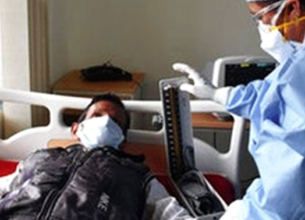WORLD VISION REPORT
10, Oct 2019

Prelims level : Indices & Reports
Mains level : GS-II- Issues relating to development and management of Social Sector or Services relating to Health, Education, Human Resources.
Why in News?
- The first-ever World Vision Report was recently released by WHO.
Highlights of the Report:
- More than a quarter of the world’s population — some 2.2 billion people — suffer from vision impairment.
- The report warned that population ageing would lead to a dramatic increase in the number of people with vision impairment and blindness.
- Presbyopia, a condition in which it is difficult to see nearby objects, affects 1.8 billion people. This condition occurs with advancing age.
- The common refractive error — myopia (a condition in which it is difficult to see objects at a distance) affects 2.6 billion, with 312 million being under the age of 19 years.
- Cataract (65.2 million), age-related macular degeneration (10.4 million), glaucoma (6.9 million), corneal opacities (4.2 million), diabetic retinopathy (3 million), trachoma (2 million), and other causes (37.1 million) are other common vision impairments listed in the report.
- Trachoma is caused due to bacterial infection in the eye. Many countries have eliminated it, including India.There was praise for India in the report for its National Programme for Control of Blindness (NPCB).
- According to the report, in 2016-17, the NPCB provided cataract surgery to a total 6.5 million people in India, achieving a cataract surgical rate of over 6,000 per million population.
- During this period, school screening was provided to nearly 32 million children and approximately 750,000 spectacles were distributed, the report said about the NPCB.
Regional and Gender Distribution:
- The prevalence of vision impairment in low- and middle-income regions was estimated by the report to be four times higher than in high-income regions.
- Three Asian regions alone (representing 51% of the world’s population) account for 62 per cent of the estimated 216.6 million vision-impaired people in the world.
- South Asia (61.2 million); East Asia (52.9 million); and South-East Asia (20.8 million).
- Myopia is the highest in high-income countries of the Asia-Pacific region (53.4 per cent), closely followed by East Asia (51.6 per cent).
- Adolescents in urban areas of China and South Korea have reported rates as high as 67 per cent and 97 per cent, respectively.
Why Vision Matters?
- The WHO report said studies had consistently established that vision impairment severely impacted quality of life (QoL) among adult populations.
- Besides, vision impairment also caused productivity loss and economic burden.
- The economic burden of uncorrected myopia in the regions of East Asia, South Asia and South-East Asia were reported to be more than twice that of other regions and equivalent to more than one per cent of gross domestic product.
Prevention is Possible:
- Out of one billion cases of vision impairment that could have been prevented, 11.9 million suffered from glaucoma, diabetic retinopathy and trachoma that could have been prevented.The estimated costs of preventing the vision impairment in these 11.9 million would have been $5.8 billion.
- This represented a significant missed opportunity in preventing the substantial personal and societal burden associated with vision impairment and blindness.
Various factors:
- Regarding gender gap, the WHO said no strong association existed between gender and many eye conditions, including glaucoma, age-related macular degeneration, and diabetic retinopathy.However, rates of cataract and trachomatous trichiasis are higher among women, particularly in low- and middle-income countries,” it clarified.
- Incidence of a rural-urban divide does exist.
- Rural populations also face greater barriers to accessing eye care due to them having to travel greater distances and poor road quality, among other factors.
- Lifestyle differences ensured that unlike cataract, higher rates of childhood myopia were found in urban populations of China and Australia since children living in rural areas spent more time outdoors.
Barriers to Eye Care:
- Accessibility to eye care services and high costs particularly for rural populations are the major drivers of vision impairment.
- Therefore, the WHO emphasised expanding Universal Healthcare Coverage and making eye care an integral part of it around the world.
- Direct costs are key barrier to accessing eye care in high-income countries, particularly for people living in rural areas or those with low socio-economic status.
- Affordability to buy lenses or spectacles was a major stumbling block.
- The WHO report, as with many other studies, highlighted that there was a gender disparity in accessibility to eye care services, with women standing a lesser chance of availing them.
- Lack of trained human resources was another factor pushing these ailments further.
















